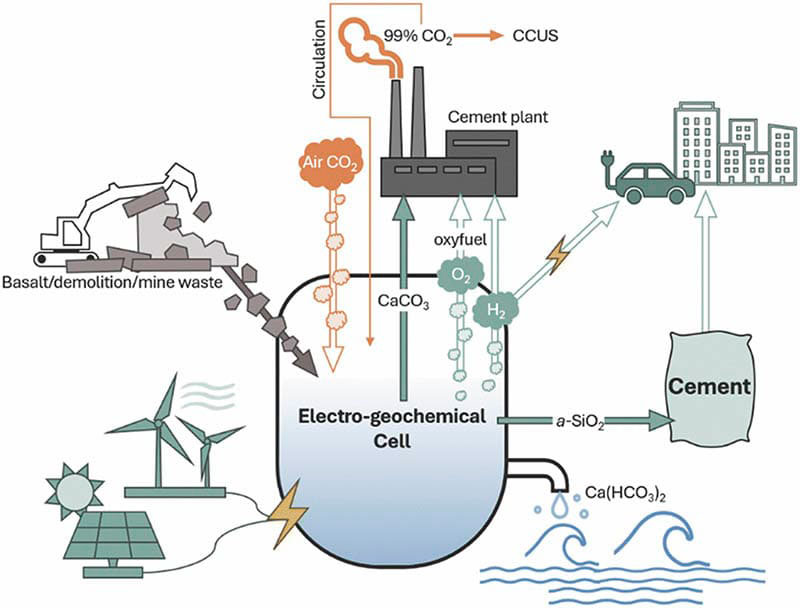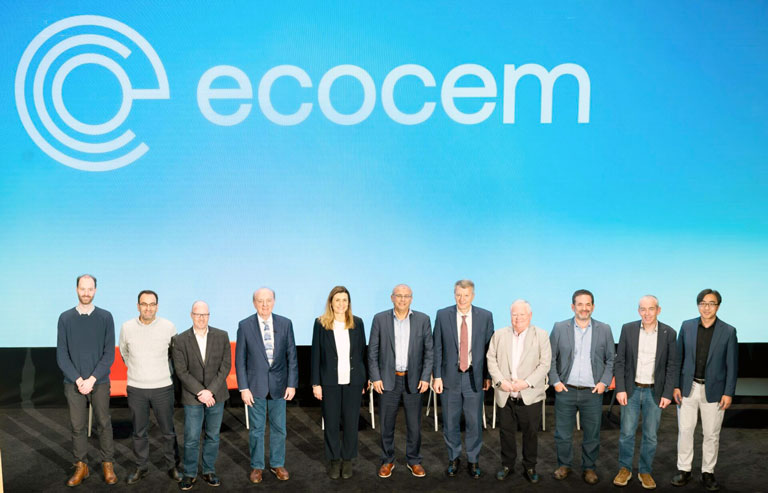A new low-cost, scalable approach demonstrated at the University of Michigan could neutralize the most carbon-heavy step in cement production without changing the manufacturing process, according to a study recently published in Energy & Environmental Science.
The research was a collaborative effort between University of Michigan, Lawrence Livermore National Laboratory, Northwestern University and the California Institute of Technology.
“Our newly developed electrochemical material manufacturing approach opens a new area in cement production and waste upcycling at scale,” said Jiaqi Li, a University of Michigan assistant professor of civil and environmental engineering, staff scientist at the Lawrence Livermore National Laboratory, and corresponding author of the study.

The proposed approach, which replaces naturally occurring limestone with electrochemically produced calcium carbonate, neutralizes the CO2 released during kiln processing with the CO2 taken up from the air during the electrochemical production.
If implemented at full capacity, the new strategy could reduce global CO2 emissions by at least 3 billion metric tons – also known as 3 gigatons – a year, according to University of Michigan staff. For scale, 37.4 gigatons of energy-related, global CO2 emissions were reported in 2023.
“The strategy can change the cement industry from a gigaton CO2 emitter to a gigaton-scale enabler for clean energy and carbon management technologies,” said Wenxin Zhang, a doctoral student at the California Institute of Technology, graduate research intern at Lawrence Livermore National Laboratory, and contributing author of the study.
Going a step further, the researchers assessed whether the technology is economically viable, taking carbon credit savings into account. The electrochemical approach proved lower-cost and more efficient compared to existing techniques.
“As the present strategy requires minimal or no modification to the business-as-usual cement plants, it has low entry barriers to be adopted by the large cement businesses,” said Xiao Kun Lu, a doctoral student of chemical engineering at Northwestern University and lead author of the study.
The study can be read here.


